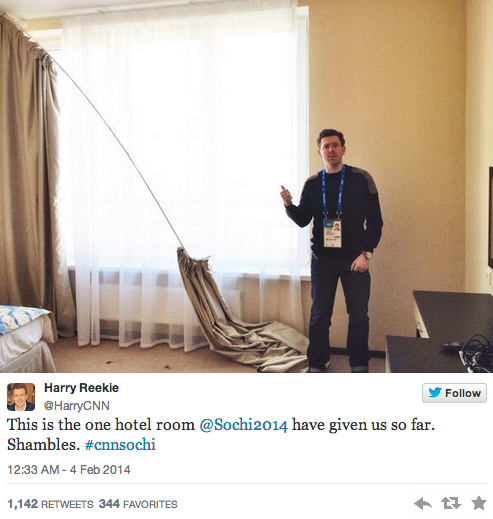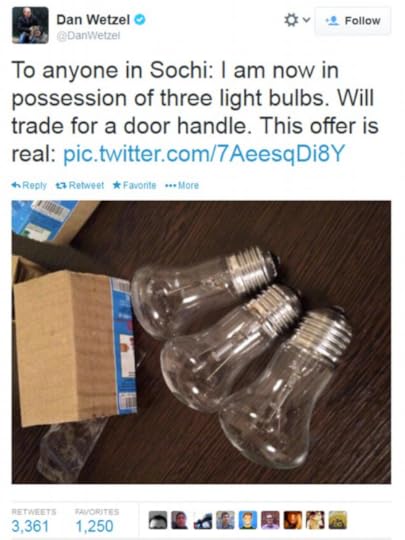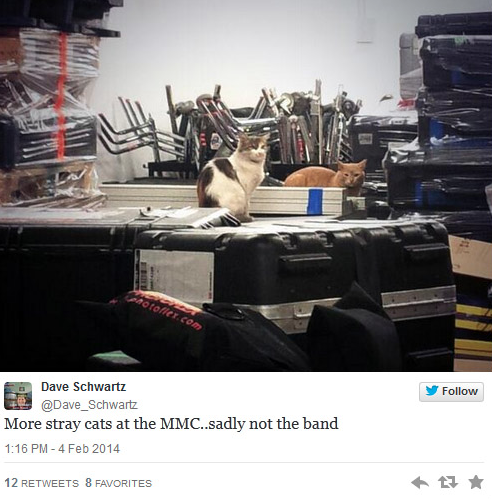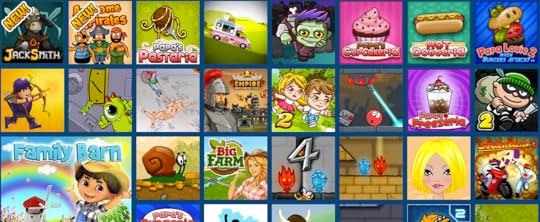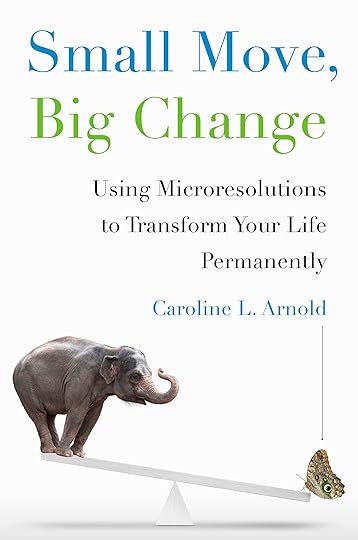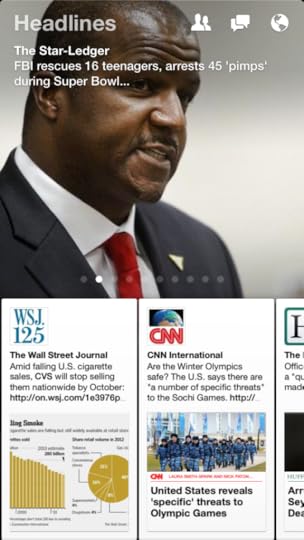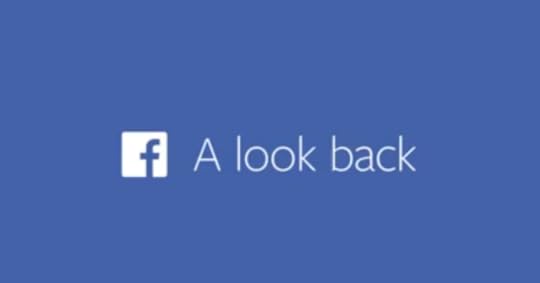Randi Zuckerberg's Blog, page 53
February 6, 2014
Sochi Hotel Disasters
Journalists covering the Sochi Olympics arrived to find less-than-glamorous hotel accommodations awaiting them. Unfinished rooms, bad plumbing, and knob-less doors were the least of their problems. Little did they know, their first coverage of the Olympics would be live tweets of hilarious and gross hotel disasters. Here are a few of our favorites:
Baffled.
Need to wash your face? Too bad.
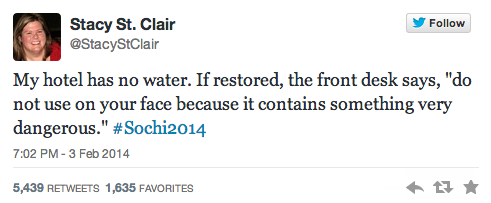
The most romantic room in the hotel.
At least this room has a window.
Need some help with aim?
#LobbyProblems
Will trade for doorknobs.
Brought your gym shoes? Good.
Cats take over Sochi.
For more entertaining #SochiProblems, be sure to follow the Twitter account, @SochiProblems, which has accumulated over 100K followers in the past 24 hours.



 by
by 
The post Sochi Hotel Disasters appeared first on Dot Complicated.
Sochi 2014: The Apps To Download And Social Media To Watch
Well, the Super Bowl was fun. Even though the game wasn’t terribly exciting, you still had fun tweeting about the game, ‘80s cultural icons, that cute puppy and David Beckham right? Social media provided a platform for viewers to weigh in on one of the biggest cultural events of the year, and your next opportunity to do so is just a few hours away.
The 2014 Winter Olympics are getting under way in Sochi, Russia this week. You may have missed the buzz in the press, what with all the talk about the Super Bowl and Bruno Mars and ‘Top 10 Commercials’ lists. And in all fairness, the Winter games won’t attracted near as many viewers as the Super Bowl (I know what you are thinking… but everyone loves figure skating!), which reportedly drew an audience of more than 111 million, making it the most watched television program in history. There are distinct and obvious differences between the social impact of the Olympics and the Super Bowl, and to borrow another sports analogy, the Olympics are a marathon, not a sprint.

The 2014 medal design
Super Bowl buzz built steadily for months, culminating in a social media explosion during the event, an extreme concentration of activity focusing on the game and the ads, but lasting only a few hours. Media Bistro reports that tweets pertaining to the Super Bowl hit nearly 25 MM during the telecast. A sprint, if you will. Advertisers also capitalized on a socially engaged audience, with Budweiser, Go Daddy, Coca-Cola and H&M enjoying significant online buzz. These shares, likes and tweets created additional value for brands looking to make the most of a significant ad investment.
The Olympics will likely prove to be a different story. The games last for more than two weeks, and cover 98 events with hundreds of athletes from around the world. The Super Bowl featured two very prominent quarterbacks for example, and while the Olympics won’t feature stars of that caliber, they will feature many more athletes across numerous disciplines. The advantage here is that the variety offered by the games is likely to reach a broader audience. Figure skating (come on, you know you’re looking forward to it) will draw a much different audience than curling (aka ‘ice sweeping’). In other words, the Olympic space is much more fragmented in terms of both its content and audience. This fragmentation will likely translate to the social space as well.
Also, consider this: Sochi is nine hours ahead of the east coast, which makes watching live broadcasts a challenge. This is in stark contrast to the 2010 games in Vancouver, which made watching the games in real time easy for Americans. Forbes reports that NBC and its sister networks will air more than 1,500 hours of Olympic coverage, though some will be delayed to accommodate the time difference. A word to the wise: if you want any suspense at all regarding the outcome of your favorite events, you will probably want to stay off social media altogether, as it will capture these moments as the happen through both traditional media and the participating athletes. The International Olympic Committee even encourages athletes to share their Olympic experiences socially (with a few guidelines of course), giving fans and followers a closer look at the atmosphere of the games. This may also give away the outcome of your recorded events. Overall, the length and variation of the games, and the fragmentation that creates, will likely result a social media marathon as users enter and exit the conversation based on interest.
Winter Olympics Tips and Fun Facts:
• NBC has two apps to help you stay on top of events and results. The NBC Sports Live Extra app (iOS and Android) allows users to stream live coverage through their cable providers, while the NBC Olympics app (iOS and Android) features athlete profiles, event schedules and results.
• Team figure skating will debut at these Olympic Games. Not sure what this means, but I can’t wait to find out! My boyfriend is thrilled! (gross exaggeration).
• Sochi is the warmest city to ever host the Winter Olympics.
• U.S. snowboarder Shaun White looks for his third consecutive gold medal in the men’s half pipe.
• This is the first Olympic Games held in Russia since the dissolution of the USSR in 1991. Moscow hosted the summer games in 1980.
• Famed U.S. Olympic hurdler Lolo Jones will represent Team USA in the women’s bobsled.
Let’s not forget an important similarity between the Super Bowl and the Olympics, and that is the patriotism they foster. The Super Bowl is a uniquely American event, almost a holiday in its own right, while the Olympics give us the opportunity to support our country and athletes. Social media allows fans to show that support openly, even directly to our teams and athletes. So no matter if you are a sprinter or a marathoner, an ice hockey fan or an alpine skiing aficionado, you have numerous opportunities to support our athletes in Sochi. And with that I would like to extend my well-wishes to Team USA, and I can’t wait to hear the national anthem and watch our flag ascend when we win all those gold medals.
USA! USA!
Posted on 2/6/2014
Rachel Lewis is a senior strategist for a full service, global digital performance agency. For more than seven years, she has helped some of the world’s largest luxury brands and retailers achieve their digital goals. Prior to her marketing career, Rachel worked as a television news producer for ABC and NBC affiliates in Texas. She is a proud alumna of Baylor University, and received her graduate degree in Communication Studies at Texas Christian University in Fort Worth, Texas. Her interests include pink, Robert Griffin III, macaroons, traveling and 80’s pop. Perhaps more impressively, she can cure hiccups without fail. Follow her on Twitter @rachellynell.



 by
by 
The post Sochi 2014: The Apps To Download And Social Media To Watch appeared first on Dot Complicated.
From Oregon Trail to Duck Life– Are Kids Games Getting Dumber?
Remember Oregon Trail? Not the real one of Lewis and Clark fame that had actual historical value. I’m talking about the computer game that I played in sixth grade. Conceived in 1971, produced in 1974, and seemingly rolled out to every elementary school by 1984, Oregon Trail allowed me, as wagon leader, to guide my party of settlers from Independence, MO to Oregon’s Willamette Valley via covered wagon in 1848.
“Computer games,” not to mention all descendants thereof, have come a long way with technological and bandwidth advances. Likely you’ve seen or played (since 1 in 3 smartphone users are active gamers ontheir device) the elaborate and intricate games available via the App stores, LeapPads, and video game consoles like the Wii. Fortunately, we have all of those available in our house for our kid’s Digital Consumption. Yet somehow, the good old fashioned computer games on our clunky home desktop get their pro rata share of my three children’s attention.
We’ve stumbled upon a Web site called Kizi, which in essence is a virtual free arcade of hundreds of games. All games are pre-teen friendly, except for a few shoot ‘em games but even those have no real show of violence. There is an overwhelming selection on the screen, all with crazy titles and even odder premises.
On one hand, many of these require problem solving, which is a great skill set to possess both in the virtual and real world. Having grown up on computer and video games, I have an appreciation for the thinking that goes into winning a game. Truth be told, I even enjoy playing some of the games with my kids, especially those that require two players, sitting side by side at the controls, working together, trying to solve various puzzles and levels to move on from one phase to the next.
On the other hand, some of the games are dumb and mindless. Enter Duck Life.
Ready for this? You get a duck. You name it. Then, you “train” your duck in various disciplines- Running, Swimming, Climbing, and Flying- all to begin your journey to become a World Champion… of Duck-dom, I guess. And how do you train your duck? Well, you simply run, swim, climb, or fly for 0 to 60 seconds by hitting the up, down, left, or right key on the keyboard until you hit something on the screen. And then you train again….and again…and again, until you get to Level 100 (???). Following?
Finally, you can enter the “Race” against three other computer ducks and hope to beat them, or it’s back to training. Uh-huh, Duck Life is more like Time-Suck Life…
And yet somehow Duck Life is my three year old’s favorite game. And while she will routinely proclaim “I want play Duck Life”, she can’t really play because she doesn’t possess the dexterity to do so. But she certainly loves hopping up on the computer table to watch her older siblings train and race away. She cheers on cue, gets mad at the duck if it loses in the race, and many times, at the encouragement of her brother or sister, acts out the duck when it’s training on screen. This is both funny and disturbing to see her take laps around the house as if channeling Running power to the duck.
On a random Saturday this past month, it was cold, windy, and almost 11:00 AM. My wife and I had simply conceded to the Digital Machinery that morning, and I’m sure the three of them had logged four plus hours on devices. And yes, we have time limits and ephemeral hard stops and this thing called breakfast that many times gets in the way. I finally said “I’m going to go on an adventure,” my call to arms that we are getting out of the house to do something, somewhere. I usually commandeer all three, but not today. The older two were stubborn and in the Digital Zone, competing at Plants v. Zombies and staring at some “How To Solve Level XYZ” video on YouTube. But the three year old is not old enough to persuade me otherwise, so she had to come.
I really didn’t have a plan in mind, just fresh air and time together. No errands either made up or real. So my daughter and I first took to driving around listening to music and then to the local park. With her at the park, it’s all about the jungle gym and daredevil feats on big kid apparatus, as if to prove she is just as strong as her siblings. But, it really was chilly that day so we sought refuge under the covered picnic plaza. Quizzically, she looked at me as if to say “Umm, now what Dad?” And then it came to me- combine her desire to showcase her athletic prowess with her unwavering passion for computer games to form the perfect activity. “Let’s play Duck Life,” I tell her.
Now, since I am a World Champion Duck Life trainer, having wasted an hour at some point to master all levels, I know how the game works. I first have to name her. “Duck” she says. Alright, fair enough. And for the next 45 minutes, I trained Duck in all four disciplines of Duck Life. From grasping her hand as she dashed around tables to holding her under my arm as she paddled below the surface to boosting her up as she scaled the walls to hoisting her high as she soared over the fire pit, we trained to Level 100.
And when it was time for the Final Race, which involves extensive stretches of the four disciplines (very similar to the Ironman in Hawaii each October), she was prepared, dedicated, and relentless throughout the race and won. Yes, Duck beat out the competition that day and was crowned by me as Mega Duck. Her proud face and beaming smile in that moment will forever be emblazoned in my mind.
I thought, hey, maybe not a bad idea to connect games to real life and turn staring at a screen into action. Especially since they love Angry Birds- how fun would that be? Feeling good about me and this idea, I triumphantly returned home with my newly crowned Mega Duck Duck. Thinking she couldn’t wait to share what had just happened to whoever would listen, she ran in, found her sister still slaving away at Minecraft on the computer, and silently resumed her perch on the table to return to Digital Land.
In the continued battle of Dad (and Mom) versus Digital Devices, I don’t know if I won today; I’ll call it a draw. But at least I have a cherished memory with my youngest and the personal gratification that I always knew I would make an excellent Duck trainer if I simply put my mind to it.
Posted on 2/6/2014
Matthew J Beshear is a Dad. And a husband, too. And along with his wife, they struggle each day to find the balance for their children between an ever evolving world of digital, devices, and technology and breathing fresh air, interacting with other humans, and learning how the real world works.



 by
by 
The post From Oregon Trail to Duck Life– Are Kids Games Getting Dumber? appeared first on Dot Complicated.
February 5, 2014
Resolutions Are Wishful Thinking; Try A Microresolution For Real Change
From losing ten pounds to getting more sleep, Small Move, Big Change author Caroline Arnold shares how to set microresolutions to improve your quality of life.
1. Why do so many New Year’s resolutions go unresolved? How are microresolutions more effective than setting big goals?
Classic New Year’s resolutions such as to get fit, to be neat, to be on-time are really more like wishes than thoughtful resolutions to change behavior. We attack these goals with enthusiasm and determination, believing that we can transform ourselves from a couch potato to gym rat, from slob to neat freak, from perennially late to on-time in a matter of weeks. Ninety percent of us bail on our New Year’s resolutions by the second month, our willpower exhausted from trying to change too much too fast. When the next year rolls around, we’re likely to make the very same resolution, believing that this year will be “the year.” Because we seldom achieve our New Year’s goal, we remain focused on fixing ourselves “someday,” rather than on making progress every day.
In contrast, a microresolution is focused on a highly targeted behavioral change that is achievable today. Instead of vowing in the abstract to be organized, your microresolution might simply be to sort and cull mail before bringing it in the house, or to immediately add identifying contact information to the new phone number that just hit your smart phone. Either of these microresolutions would make you more organized now, today. Microresolutions overwhelmingly succeed because you channel your willpower against a narrow target. Microresolutions are made two at a time and are kept for a minimum four weeks to ensure they stick before new ones are added.
There’s a lot of starting, stopping, and restarting with New Year’s resolutions, where microresolutions are about continuous self-improvement.
2. What change in your life are you most proud of having accomplished through a microresolution?
This is a really tough question, because I’ve made progress in every area of my life through microresolutions. One microresolution that changed my life was a commitment to get myself ready for bed shortly after dinner, so that as soon as I started to feel tired or doze on the couch I could just stand up and walk off to bed, because my bedtime routine was already done, from pajama donning to flossing to phone charging. That one resolution resulted in about seven hours more sleep per week. Sleep is the most important ingredient in self-improvement, because when you’re fatigued you lose focus and your willpower fades more quickly. I devote a whole chapter to sleep in Small Move, Big Change.
3. Say I want to lose 10 pounds. What’s one small thing I can do every day, starting today, to get there?
Any discrete behavioral change that reduces your daily calories will lead to weight loss, as long as that new behavior becomes routine. The microresolutions you craft for yourself should be based on careful observation of your own eating behaviors. For example, one microresolution I made that was enormously effective was never to eat a conference room cookie again, because I worked in an office where rich cookies were often served in conference rooms. For someone else, a better microresolution might be only to eat off my own plate, eliminating all the extra calories that come with finishing off your kid’s food or eating half of your partner’s leftover dessert.
Here are some other ideas to get you thinking:
Many people eat another meal’s worth of calories after dinner in the run-up to bedtime. Making a resolution not to eat after 8:30 p.m. would save calories, likely get you to bed earlier (because we eat for energy), and the extra sleep itself would boost your weight loss efforts. This one was a game-changer for me.
Making a microresolution to savor food and drink (every bite, every sip) will give you a better chance to achieve satisfaction without overeating. The more quickly and mindlessly you eat, the less enjoyment you’ll experience, and the more likely you’ll be to overeat in search of greater satisfaction.
If you eat a cookie or candy bar every day around 3pm for a snack, making a microresolution to eat just half that snack will save you 100 calories a day, enough to lose 10 pounds in three years. If you want to lose 10 pounds this year, make second microresolution that will save you another 100 calories—such as resolving to use skim milk in coffee, passing on bread at dinner, or reducing your wine consumption by half a glass each evening.
Microresolutions work because they are designed to be sustainable forever. Better to lose five pounds that you keep off for life than fifteen pounds that you gain back in three months. By adjusting your behavior one or two microesolutions at time, you can remake your eating patterns so that weight control is managed on autopilot.
4. Where can our audience learn more about your book?
You can learn more about Small Move, Big Change and making microresolutions at smallmovebigchange.com where there are free resources and links to articles about the book that have already been published. Small Move, Big Change was named a best book of 2014 by Adam M. Grant (the author of Give and Take and by Inc. Magazine. The book is available at online booksellers now, and in independent bookstores across the country beginning January 16.
Posted on 2/5/2014
Caroline L. Arnold has been a technology leader on Wall Street for more than a decade, managing some of the financial world’s largest software development teams and leading some of the industry’s most visible and complex initiatives. A dynamic and engaging speaker, she has appeared before groups as large as 5,000 people. Arnold is a recipient of the Wall Street & Technology Award for Innovation for building the auction system for the Google IPO, and her name appears on technology patents pending. Arnold serves as a Managing Director at Goldman Sachs, a leading Wall Street investment bank.



 by
by 
The post Resolutions Are Wishful Thinking; Try A Microresolution For Real Change appeared first on Dot Complicated.
Grumpy Cat Valentines on Etsy
Valentines Day is a day many people love and even more love to hate. But if there’s anyone who hates the idea of a little romance and heart-shaped desserts most, it’s Grumpy Cat. If you’re in the same boat, you might appreciate a few of these Grumpy Cat un-Valentines on Etsy.
Be My Valentine Glass - The sweetest taste of rejection
Grumpy Cat Meme Card - Love is in the air…?
Grumpy Cat iPhone Case - It’s raining hearts!
A Romantic Valentine – Who’s the lucky date?
Grumpy Cat Cross Stitch - Not even gonna go there.
Are you Team Grumpy or Team Cupid? Tell us in the comments below!



 by
by 
The post Grumpy Cat Valentines on Etsy appeared first on Dot Complicated.
Super Bowl Ads Women Loved– And Loved To Hate
Who won the Super Bowl? It wasn’t the Seahawks, but women in Seattle, Denver and everywhere — as brands that demeaned females were called on the carpet as millions watched from the sidelines.
The magic bullet enabling this transformation? Twitter.
Nearly 30% of tweets sent during the game are about the ads. And women – who make up 46% of the Super Bowl viewing audience and are more prevalent and active on Twitter – are increasingly the consumers that brands are targeting with their $4 million spots.
I summarized my perspective in 140 characters by issuing this tweet in advance of Super Bowl:
Women watch equally, buy + share in greater #s than men on Super Bowl Sunday. Ads with female appeal = best return on $4 million price-tag.
Then I sat back and watched those multi-million dollar ads roll in.
What did the women who make ads for a living think?
I’m an Advertising Creative Director. One of only 3% of Creative Directors who are women (shocking when you consider that 80% or more of consumer spending lies in the hands of women). I rallied my fellow female creatives and armed them with a Twitter hashtag — #3percentSB – and tasked them with sharing their real-time feedback on the ads.
Then I went one step further and invited 40 top ad women to gather in person at agencies in Boston (Hill Holliday) and San Francisco (The Hive) for a real-time Tweetup. Between the women who showed up at our live event and dozens of others who chimed in from their living room couches, we sent a serious message.
All in all, 4,836 tweets carried our hashtag, with a reach of 2.5 million.
What was the consensus of all that tweeting? That GoldieBox was a complete touchdown and that the ultimate fumble was SodaStream, whose spot with Scarlett Johansson quite literally “sucked.”
From a creative standpoint, Cheerios and Radio Shack earned points for fresh creative that was memorable and worthy of envy from the creative crowd.
Both Go Daddy and VW responded to our tweets, signaling that brands were indeed listening.
Did you watch? Did you pay attention to the ads? Super Bowl Sunday may be the ultimate cash-cow day of TV advertising, but the other 364 days of the year have a less noted, but still significant effect on us. All of us (our kids included) see 3,000 ad messages a day. When you like or dislike what you see, take a page from The 3% Conference’s playbook and tweet back. Brands are clearly listening.
Posted on 2/5/2014
Kat Gordon is the founder and creative director of Maternal Instinct, an agency of creative problem solvers for marketing to moms, and founder of The 3% Conference, a ground-breaking event highlighting the business importance of female creative directors. She is also the mother to two boys, ages 11 and 15.



 by
by 
The post Super Bowl Ads Women Loved– And Loved To Hate appeared first on Dot Complicated.
Half A World Away, These Two Friends Found Each Other Through Skype
This touching story from Skype helps illustrate how technology is making the world a better place. It’s so heartwarming to see videos like these, especially since so much of what we hear is how polarizing constant connectivity can be.
Sarah from Nappanee, Indiana and Paige from Auckland, New Zealand had never met in person. But they’d known each other since they were born. Their mothers found each other online after both girls were born without a left arm.
Watch and try to hold it together, although I’d recommend having some tissue nearby.
Posted on 2/5/2014



 by
by 
The post Half A World Away, These Two Friends Found Each Other Through Skype appeared first on Dot Complicated.
Paper App From Facebook Is Making Waves With Seamless Integration
Most of us get more of our news and current event updates than we’d like to admit from Facebook. So it’s no surprise that the hottest new app out there integrates our beloved Facebook with various news sources, making for a seamless browsing experience.
Paper (free, iOS only right now) has a Flipboard-style layout, with news stories, photos and status updates presented as tiles. You can swipe through selected categories for stories on different subjects. The home screen starts with updates from your own Facebook timeline, including any notifications or messages you may have. Then, you can swipe right through your hand-picked sections, with options like ‘Headlines,’ ‘Tech,’ ‘Well-Lived,’ ‘Cute’.
The advantages to Paper (over the Facebook app) include the visually-pleasing layout and ability to easily continue reading other interesting items without launching a new app. It’s dual function; you can check up on your network and the wider world simultaneously. It addresses that (minor, but familiar) dilemma that occurs when there is nothing interesting on Facebook but you’re not quite done with aimless wandering online. Another neat feature is the ability to read a story on another platform, and then swipe down to return to your place in the app.

Flipping up to read the full text of the story
All the various shortcuts (swipe up to read, down to return, etc.) are a little tricky to get the hang of but when you install the app, a tutorial automatically guides you and teaches you how to navigate between stories and sections. I do wish that there was an option to choose which external sites fed into the app– while it seems like a good mix of sites like WSJ.com, CNN, The Verge, Daily Beast, BuzzFeed, it would be nice to add in my own favorite, smaller blogs.
Paper nicely integrates stories from friends with stories from other sites, and makes it much easier to seamlessly browse stories. I can see myself using Paper most often as a time-waster in waiting rooms or at the airport, as opposed to a new way to get check my Facebook notifications. The format appeals to me as a way to consolidate apps and sites to check– and makes me look forward to the day when all my social media and news will be integrated. I would love to be able to catch up with all my platforms with the click of a button.
Have you used Paper? What do you think?
Posted on 2/5/2014
Written by Liz Wassmann



 by
by 
The post Paper App From Facebook Is Making Waves With Seamless Integration appeared first on Dot Complicated.
February 4, 2014
A Sweet Look Back From Facebook To Celebrate 10 Years Online
Okay, this is actually really sweet. In honor of Facebook’s ten-year-anniversary, their team created a little video that compiles your top moments since you joined the site. It’s fun to see old photos and I definitely got a little nostalgic as they scrolled through my most-liked statuses from the past few years. Seeing my past milestones, and all the support I received from family and friends, is really heartwarming.
To see your ‘Look Back’ video, click here.
It’s hard to believe the site has only been around for 10 years. In some ways, it feels like we’ve always had Facebook. Watching my video, I saw myself move from high to college to beyond. The faces of old friends popped up, and I got to see that awful first profile picture.
Here’s what founder Mark Zuckerberg has to say about this momentous 10-year-anniversary. “It’s pretty mind-blowing (to think about the impact)” the network has had on the world.
Happy Birthday Facebook!
Posted on 2/4/2014
Written by Liz Wassmann



 by
by 
The post A Sweet Look Back From Facebook To Celebrate 10 Years Online appeared first on Dot Complicated.
Mindfulness Helped the Seahawks Win A Super Bowl. It Can Help You, Too.
This has been a really big week for mindfulness. This practice is not new – in fact it has been around for over 2500 years – but it is finally having its day! Before jumping ahead to cheer for all the recent accolades, let’s just take a minute, take a deep breath and allow space for this moment to sink in, one in which mindfulness will be recognized by the masses as a significant tool for maintaining a healthy life.
Mindfulness has been part of our Western culture for the greater part of the past 30 years and has long been synonymous with at least one of two prominent figures. Jon Kabat-Zinn, whom I refer to as the “Grandfather of Mindfulness in the Western World” developed a program in 1979 called Mindfulness Based Stress Reduction (MBSR) at the University of Massachusetts designed for chronically ill medical patients, in which he taught mindfulness and meditation to use their minds to change their bodies. Every scientific study ever conducted on the effects of a MBSR course proves the benefits by showing a significant decrease of symptoms and increase in quality of living. About 25 years ago Jack Kornfield, a trained Buddhist monk, co-founded Spirit Rock, a Buddhist retreat center in Northern California, and is seen as one of the key teachers of mindfulness. But if you weren’t in the mindfulness community, or don’t watch Oprah’s Super Soul Sunday, you may have not ever have heard of these men or been privy to their significant contributions.
Over recent years, mindfulness programs have been developed all over the country in our health care industry, our military, our education system, and in the business world. More key players (like Congressman Tim Ryan of Ohio) have discovered mindfulness and are now crusading or congressional funding of mindfulness programs. But again, unless you were somehow up to date on the meditation practices of Congress members, you may not have known about it.
Five years ago, a conference that started out fairly small in San Francisco has now grown in its exposure and impact with its annual conference occurring over President’s Day weekend to over 2000 world-wide attendees. Wisdom 2.0 asks the question: “How do we live with awareness and connection in a digital age?” and brings together leaders in the spiritual world with leaders in the business world like Arianna Huffington, Bill Ford and Silicon Valley’s major players to create space and conversation. It’s brilliant – but again, if you don’t run in spiritual or tech circles, you may not have heard about it.

Photo by Peter Yang for ESPN
But all that has now changed. Two major events in Mindfulness’s timeline have occurred in one week, and most people in the nation were affected one way or the other. The current issue of Time magazine, dated February 3, 2014, hit mailboxes and newsstands last week. The cover story is dedicated to The Mindful Revolution. For those of us in the mindfulness community it felt huge. Yes, we have had the Mindful magazine out for nearly a year now, but again, unless you knew about that or found it on the stands at Whole Foods, you might not know. But my social media updates, news feed and twitter feed were buzzing about the huge exposure mindfulness was getting from TIME. There was tangible energy floating through the mindfulness world as this trusted, newsworthy magazine touted a practice that we all know to be life-changing in its promises, time-tested in its tools and grounded in its roots. It was now getting not just legitimate, secular exposure, but endorsements stating clearly and succinctly how everyone could bring this practice into their lives and experience the benefits of greater presence, awareness, balance, joy and peace (not to mention the health benefits). I know I personally felt pride and though I’ve been a mindfulness educator for over two years, it felt like it was now finally nationally recognized as a practice that was not just something “other” people did. Mindfulness is for everyone and TIME magazine showed that.
And as the universal law of the spirit works, timing is everything and there are no accidents. So, if you happened to be not in the loop of TIME magazine (although I have to say, it took me days to find a copy cause every store I went to was sold out, so clearly people caught on fast!), then I am most certain that you may have fallen into the other category of watching the Super Bowl. Okay, even if you didn’t watch it, you had to know it was happening. The team that won by a whopping 35 points, beating out record-breaking Peyton Manning, is the Seattle Seahawks…a football team that just so happens to practice mindful meditation.
Back in August 2013, ESPN magazine featured a story on the Seahawks, with a picture of players meditating, with a tag line referring to their belief that a “kinder, gentler philosophy is the future of football.” The article talked about their Coach Pete Carroll’s philosophy of introducing a sports psychologist, Mike Gervais, who guided the players in yoga and meditation with the invitation to “breathe in, breathe out and open their minds.”
Rather than a typical coach screaming at the players, Coach Carroll believes that “happy players make for better players.” He tries to implement practices that guide the players to be in the moment, relax and offers tools for dealing with stress. Well, this little experiment of Carroll’s has paid off with the biggest reward the NFL can offer!
Seahawks players Russell Okung was quoted in that article as saying, “Meditation is as important as lifting weights and being out here on the field for practice. It’s about quieting your mind and getting into certain states where everything outside of you doesn’t matter in that moment. There are so many things telling you that you can’t do something, but you take those thoughts captive, take power over them and change them.”
Wow, an NFL player whose team is still celebrating as I stay up late to write this, summed up the tenants of mindfulness so eloquently: quiet your mind, be in the moment, acknowledge and let go of thoughts that aren’t serving you, have power of your negative thought patterns and cycles, and the importance of bringing these tools into your everyday life. I hardly could’ve said it better myself.
Posted on 2/3/2014
Joree Rosenblatt has a Master’s in Counseling Psychology and is a mindfulness educator in the Bay Area. In addition to working at a K-8 private school teaching mindfulness to students, she teaches her original curriculum to adults, and onsite in corporations, in the Fundamentals of Mindfulness and Mindful Parenting. Joree’s true passion is raising her two daughters, mindfully of course…well, most of the time! Even though she already is a rock star mom, Joree practices mindfulness every day, and when all else fails, she remembers to take a moment and just breathe.



 by
by 
The post Mindfulness Helped the Seahawks Win A Super Bowl. It Can Help You, Too. appeared first on Dot Complicated.




